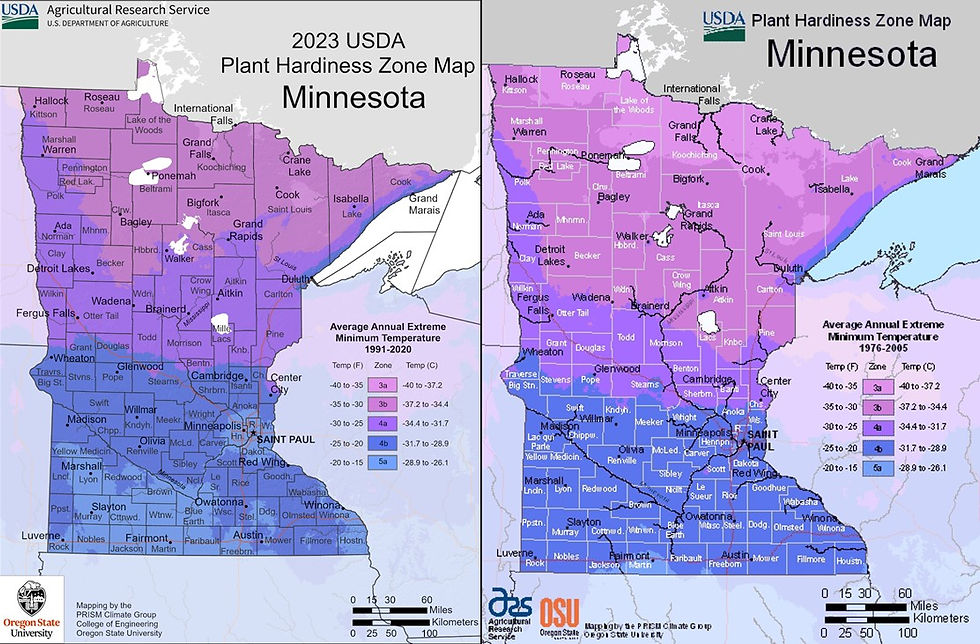
What Will This Warm Winter Do To My Plants And Is Dakota County Warmer?
Some of us enjoyed our strangely warm winter and others of us mourned the lack of snow and cold temperatures. But for gardeners, the main concerns now center around questions like – what effect will the warm, snowless winter have on my plants; on how I prune my trees and shrubs; and what about the bug population? And looking beyond this year, is Minnesota warming? And, if so, what does that mean for the plants I have or will plant? Read this article for some answers to your questions.
Marjorie Blare, Dakota County Master Gardener & Julie Harris, Dakota County Master Gardener

How Will the Warm Winter Affect My Plants This Year?
The lack of cold and snow may have some effect on your plants, shrubs and trees but there are some things that you can do now, and in the future, to mitigate the damage. Which plants are likely to be affected depends somewhat on your fall preparation and on other factors, such as the plant species. Fortunately, the University of Minnesota Extension experts have prepared an excellent article that provides answers to all of these questions. Click this link to access a thorough discussion and practical advice for dealing with the effects of our warm winter.
How does the 2023 hardiness zone change affect my garden?
The United States Department of Agriculture (USDA) produces a “plant hardiness zone map,” which is a tool based on average annual extreme winter temperatures. The zone map can help gardeners decide which plants may grow well in their garden. Of course, other factors affect whether a plant will thrive in your garden, notably - soil, sun, water and care. But the zone map is a helpful tool and so is something of which you should be aware.
In 2023, the USDA updated the zone maps for the first time since 2012. The 2023 USDA hardiness zone map documents the average minimum temperatures of weather from 1991 to 2020. There are 13 zones in the USDA zone map, divided into 10 degree increments. The larger numbers are warmer zones and smaller numbers are cooler zones. Each zone is also divided into half zones (“a” and “b”) which indicate a 5 degree change in temperature. It’s a pretty good bet that a plant that can thrive in zone 13 is not going to thrive in zone 4.
So, the farther south you are the warmer it gets, right? Well, not always. In the 2012 zone map, Dakota county was in the 4b zone. In the 2023 zone map, parts of Dakota County are in 5a (-20 to -15) and others are in 4b (-25 to -20). Significantly, the 2023 map is able to show variations due to “heat sinks” near cities, mountains and bodies of water. In other words, cities tend to hold more heat because they include large areas of concrete and blacktop. Areas of the county closer to the Twin Cities are actually warmer than farther south! But note that more of southwestern Minnesota is now in the 5a zone as well.

Being aware of your zone will allow you to make better choices when you buy plants. Plants that were once marginally hardy in the Dakota County area may now have a higher chance of surviving. When you buy a plant at your local nursery, they may have a tag that gives you the zones in which it is hardy. Before, you might have passed over “Reticulated Iris” (zones 5-9). Now, if you live in an area in the (5a) heat sink of the Twin Cities, you might give it a shot.
References:
Photo Credits: Photo 1 – Pixabay.com (All Creative Commons), Photo 2 – University of Minnesota Extension



